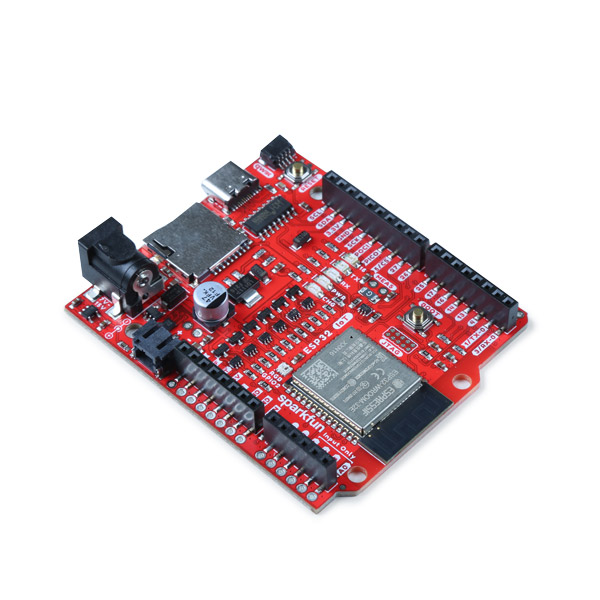IoT RedBoard ESP32 Development Board Hookup Guide
Introduction
The SparkFun IoT RedBoard is an ESP32 Development Board that includes everything but the kitchen sink! Espressif's ESP32 WROOM is a powerful WiFi and Bluetooth® MCU module that targets a wide variety of applications. At the core of this module is the ESP32-D0WDQ6 chip which is designed to be both scalable and adaptive. The IoT RedBoard can target a wide variety of applications, ranging from low-power sensor networks to the most demanding tasks, such as voice encoding, music streaming, and MP3 decoding. The IoT RedBoard also utilizes our handy Qwiic Connect System which means no soldering or shields are required to connect it to the rest of your system!
The USB-to-serial is achieved with a USB-C connector with through hole anchoring and the ubiquitous CH340G requiring fewer driver installs. We've included 3.3V voltage translation and a Qwiic connector to the edge of the board to allow for quick and seamless connection to our ever-growing line of I2C based Qwiic products. The board even includes a microSD socket if your application requires you to log and save data to a memory card. For remote power, we have included a 2-pin JST connector to attach a single cell, LiPo battery. There's also a built-in LiPo charge IC (MCP73831) and fuel gauge (MAX17048).
The operating system is freeRTOS with LwIP; TLS 1.2 with hardware acceleration is built in as well. Secure (encrypted) over the air (OTA) upgrade is also supported, so that users can upgrade their products even after their release, at minimum cost and effort.
Let's dive in and see what this baby can do!
Required Materials
To follow along with this tutorial, you will need the following materials. You may not need everything though depending on what you have. Add it to your cart, read through the guide, and adjust the cart as necessary.
Suggested Reading
If you aren’t familiar with the following concepts, we recommend checking out these tutorials before continuing.

